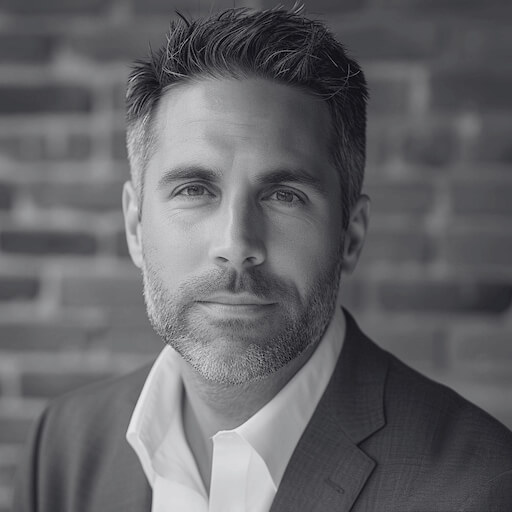Colorado Child Abuse Statistics 2023: Facts about Child Abuse in Colorado reflect the current socio-economic condition of the state.

LLCBuddy editorial team did hours of research, collected all important statistics on Colorado Child Abuse, and shared those on this page. Our editorial team proofread these to make the data as accurate as possible. We believe you don’t need to check any other resources on the web for the same. You should get everything here only 🙂
Are you planning to start a Colorado LLC business in 2023? Maybe for educational purposes, business research, or personal curiosity, whatever it is – it’s always a good idea to gather more information.
How much of an impact will Colorado Child Abuse Statistics have on your day-to-day? or the day-to-day of your LLC Business? How much does it matter directly or indirectly? You should get answers to all your questions here.
Please read the page carefully and don’t miss any words.
On this page, you’ll learn about the following:
Top Colorado Child Abuse Statistics 2023
☰ Use “CTRL+F” to quickly find statistics. There are total 20 Colorado Child Abuse Statistics on this page 🙂Colorado Child Abuse “Latest” Statistics
- At least 20% of child sex offenders have 10 to 40 victims, whereas over 70% have between 1 and 9 victims.[1]
- In Colorado from 2010-2018, 273 children died of abuse or neglect, 200 of them were age 3 or younger and 114 were babies.[2]
- In Colorado from 2016 to 2020, the year 2019 has the highest number of child maltreatment victims with 12,246 child victims.[2]
- 80% of the funding for services is provided by CDHS’s Division of Child Welfare, which also monitors child welfare practices and provides policy guidance.[2]
- Physical abuse is the 2nd most common form of maltreatment in Colorado, with 10.3% of children being physically abused from 2016 to 2020.[2]
- According to a Colorado Sun analysis of state statistics, in each of the last several years, 60% of child deaths due to abuse or neglect occurred in households that had already been reported to child welfare officials.[3]
- Sexual abuse is the 3rd most common form of maltreatment in Colorado, with 9.26% of children being sexually abused from 2016 to 2020.[2]
- Comprising 43.1% of all children in Colorado foster care, white is the most common ethnicity or race of children living in foster care.[2]
- Hispanic is the second most common ethnicity for children living in foster care comprising 37.2% of the foster care population in Colorado in the year 2020.[2]
- According to a Colorado Sun Analysis of State Statistics, in each of the last several years, 60% of child deaths due to abuse or neglect occurred in households that had already been reported to child welfare officials.[3]
- According to data gathered by Darkness To Light, children ages 17 and under are more prone to sexual assaults with a reported case of roughly 70% of all sexual assault cases.[3]
- The data gathered by Darkness to Light, a non-profit organization aimed to prevent child abuse, shows that most child victims are abused by family members, with an occurrence rate of 30-40%.[3]
- 50% of all sexual abuse cases among children are initiated by someone outside the family they have a connection with.[3]
- Strangers comprise 10% of all child abuse cases.[3]
- According to statistics, it has been reported that 30% of all child abuse victims never disclose any information to anyone.[3]
- There are roughly 70% of child sex offenders with 1 to 9 victims in their lifetime, with 20% of child sex offenders having 10 to 40 victims.[3]
- The average count of child molester victims in a lifetime is reported to be around 400.[3]
Colorado Child Abuse “Other” Statistics
- The foster care entry rate in Colorado in recent years is as follows: 4.2% in 2016, 4.1% in 2017, 3.8% in 2018, 3.5 in 2019, and 2.8 in 2020.[2]
- More than 20% of individuals who reported it to officials get subsequent backtracks.[1]
- Before the age of 18, 1 in 4 girls and 1 in 6 boys would have experienced being sexually assaulted.[3]
Also Read
- Alaska Child Abuse Statistics
- Arizona Child Abuse Statistics
- Arkansas Child Abuse Statistics
- California Child Abuse Statistics
- Colorado Child Abuse Statistics
- Connecticut Child Abuse Statistics
- Florida Child Abuse Statistics
- Georgia Child Abuse Statistics
- Illinois Child Abuse Statistics
- Indiana Child Abuse Statistics
- Iowa Child Abuse Statistics
- Kansas Child Abuse Statistics
- Kentucky Child Abuse Statistics
- Louisiana Child Abuse Statistics
- Maine Child Abuse Statistics
- Maryland Child Abuse Statistics
- Michigan Child Abuse Statistics
- Minnesota Child Abuse Statistics
- Montana Child Abuse Statistics
- Nebraska Child Abuse Statistics
- Nevada Child Abuse Statistics
- New Hampshire Child Abuse Statistics
- New Jersey Child Abuse Statistics
- New York Child Abuse Statistics
- North Dakota Child Abuse Statistics
- Ohio Child Abuse Statistics
- Oregon Child Abuse Statistics
- Rhode Island Child Abuse Statistics
- South Carolina Child Abuse Statistics
- South Dakota Child Abuse Statistics
- Tennessee Child Abuse Statistics
- Texas Child Abuse Statistics
- Utah Child Abuse Statistics
- Vermont Child Abuse Statistics
- Virginia Child Abuse Statistics
- Washington Child Abuse Statistics
- West Virginia Child Abuse Statistics
- District of Columbia Child Abuse Statistics
How Useful is Colorado Child Abuse
One of the primary functions of Colorado Child Abuse agencies is to investigate reports of abuse and neglect and ensure that the children involved receive the necessary intervention and support. This is an important role that can prevent further harm to the children and potentially save lives. By providing a channel for concerned individuals to report suspicions of child abuse, Colorado Child Abuse agencies create a vital lifeline for children who may otherwise have no means of seeking help.
Additionally, Colorado Child Abuse agencies work to educate the public on the signs of abuse and how to respond appropriately. By increasing awareness and knowledge of child abuse, these agencies empower individuals to recognize and report abuse, potentially intervening in dangerous situations before they escalate. This education can have a significant impact on the prevention of child abuse and the protection of vulnerable children in the community.
Furthermore, Colorado Child Abuse agencies offer a range of support services for children who have experienced abuse or are at risk of abuse. These services often include counseling, therapy, and support groups, which can help children process their experiences, heal from their trauma, and build resilience. By providing a safe space for children to express themselves and receive the care they need, Colorado Child Abuse agencies play a crucial role in fostering healing and recovery for those who have been impacted by abuse.
It is important to acknowledge that while Colorado Child Abuse agencies provide valuable services and support, there are always areas for improvement. The resources and funding allocated to these agencies are often insufficient to meet the needs of all children in Colorado who are at risk of abuse or have experienced abuse. Additionally, there may be gaps in services or areas where the system can be strengthened to better protect children and prevent abuse from occurring in the first place.
In conclusion, Colorado Child Abuse agencies play a vital role in protecting and supporting vulnerable children in our community. By investigating reports of abuse, educating the public, and providing crucial support services, these agencies are making a tangible difference in the lives of children who have experienced trauma and abuse. While there are always areas for improvement, it is clear that the work of Colorado Child Abuse agencies is invaluable in the fight to end child abuse and protect the most vulnerable members of our society.
Reference
- nestcac – http://nestcac.org/services/education-services/child-abuse-statistics/
- colorado – https://cdhs.colorado.gov/our-services/child-and-family-services/child-welfare
- coloradosun – https://coloradosun.com/2020/02/27/colorado-child-abuse-and-neglect-fatalities/
- hhs – https://cwoutcomes.acf.hhs.gov/cwodatasite/pdf/colorado.html
- roomredux – https://denver.roomredux.org/statistics/
